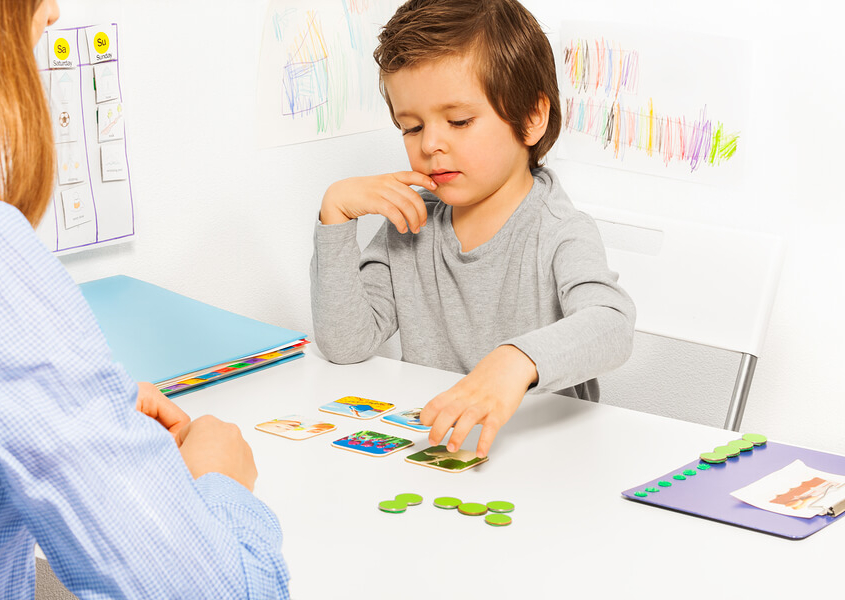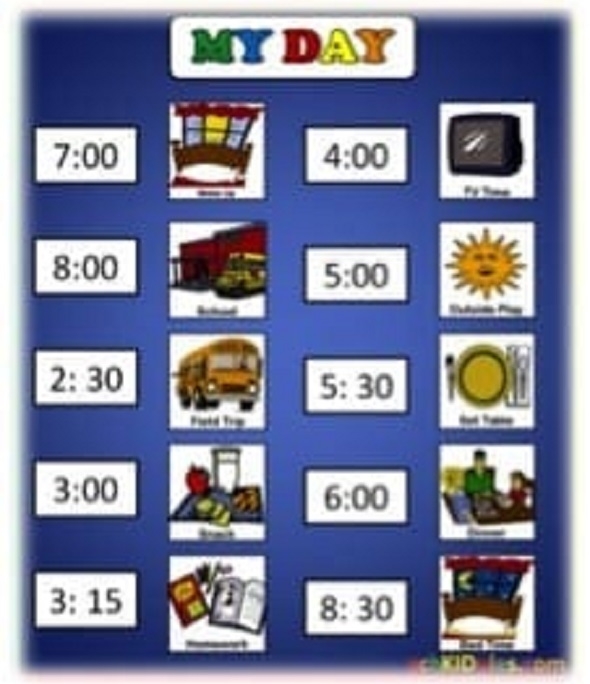ABA Therapy at Home
Applied Behavior Analysis (ABA) therapy isn’t limited to clinics; it can be powerfully and effectively delivered right in your home. With thoughtful planning and expert guidance, in-home ABA therapy allows children with autism to learn and grow in the comfort of their own environment. Trained behavior technicians work directly with your child during scheduled sessions, using proven strategies to build communication, social, and daily living skills. The duration and frequency of these sessions are customized based on your child’s unique needs and the recommended treatment hours outlined by a Board Certified Behavior Analyst (BCBA).
By bringing therapy into the home, families gain more than convenience; they gain a front-row seat to their child’s progress and a deeper understanding of how to support that growth every day.
Let’s discuss some considerations and steps of ABA therapy in a home setting:
- What is ABA Therapy at Home
- Why Choose In-Home ABA Therapy?
- Considerations when starting ABA Therapy at Home
- Benefits of LeafWing’s ABA Therapy at Home for your child with autism
- Advantages of ABA Therapy at Home Services for Parents
- How to Get Started
- Key Takeaways for Parents and Caregivers

What is ABA Therapy at Home?
Applied Behavior Analysis (ABA) therapy at home is a personalized, evidence-based approach to helping children with autism develop essential life skills, reduce challenging behaviors, and thrive in their natural environment. Instead of traveling to a clinic, families receive support directly in their homes from trained behavior technicians and Board Certified Behavior Analysts (BCBAs).
Why Choose In-Home ABA Therapy?
Home-based ABA therapy offers unique advantages for both children and caregivers:
Benefits for Children
- Familiar environment: Reduces anxiety and distractions
- Real-life skill development: Daily routines become learning opportunities
- Behavioral insight: Therapists observe natural behaviors in context
- Faster generalization: Skills learned at home transfer more easily to other settings
Benefits for Parents and Caregivers
- Convenience: No travel required—ideal for busy families
- Flexible scheduling: Therapy hours tailored to your routine
- Hands-on training: Learn ABA techniques alongside your child
- Family involvement: Siblings and other caregivers can participate
Considerations When Starting ABA Therapy at Home
ABA therapy at home services provides an invaluable resource for children and families who are looking to benefit from Applied Behavior Analysis (ABA) interventions. ABA is a type of therapy that focuses on using positive reinforcement and other behavior modification techniques to achieve desired behavioral changes in children. When considering ABA therapy services at home, there are a few important points to consider:
Consultation with a Professional: It is advisable to consult with a qualified behavior analyst who has experience and specializes in ABA therapy. They can assess your child’s unique needs, develop an individualized treatment plan, and provide the necessary guidance throughout the process.
Create a Structured Environment: It is helpful to establish a structured and organized environment at home to support the progress of therapy. This can include designated areas for different activities, visual schedules, and clear boundaries. However, this can also vary in treatment if the professional you are working with wishes to work on the generalization of therapy by varying the location in your home. That being said, whatever area is used for therapy, that area should be conducive to therapy.
Identify Goals: Work with the behavior analyst to identify specific target behaviors or skills you want to address through ABA therapy. These can be related to communication, social interaction, daily living skills, or reducing challenging behaviors.
Develop a Reinforcement System: ABA therapy uses positive reinforcement to encourage desired behaviors. Create a system of rewards or reinforcers that motivate your child. This can include verbal praise, tokens, small treats, or access to preferred activities or toys.
Implement Teaching Procedures: ABA therapy often uses discrete trial training (DTT) or naturalistic teaching strategies to teach new skills. These methods involve breaking down skills into small, manageable steps and providing repeated practice and reinforcement.
Treatment Consistency: Consistency is crucial in ABA therapy. Implementing the therapy techniques consistently across different caregivers and environments over time will yield the best results. Repetition can be necessary to ensure that a skill is learned and helps solidify skills, so your Board Certified Behavior Analyst (BCBA) will ensure regular practice and review sessions are planned for.
Data Collection: Keep track of your child’s progress by collecting data on their behaviors and skill acquisition or perhaps your treatment team will also handle this. The data that is collected helps evaluate the effectiveness of the therapy so that the therapy team can make necessary adjustments to the treatment plan as needed.
Collaboration and Training: Involve other family members or caregivers in the therapy process. For example, grandparents, adult children, and others who have or have had a hand in raising your child. The BCBA will collaborate with those individuals to ensure consistency among everyone and provide them with training on ABA techniques so that they can follow the treatment plan and support your child’s progress.
Generalization and Maintenance: The Board Certified Behavior Analyst (BCBA) and the treatment therapy team will help your child generalize the skills learned during therapy to other settings and situations (e.g., the grocery store). The BCBA will develop a plan to practice the learned skills in different contexts and gradually fade prompts and supports to promote independence and maintenance of skills.
Ongoing Communication with Professionals: Regularly communicate with the behavior analyst or therapist to discuss progress, address challenges, and receive guidance. They can provide ongoing support and adjust the therapy plan as needed. Additionally, if you also have your child receiving speech therapy or occupational therapy, all of those professionals should be communicating about therapy.
Remember that ABA therapy should be personalized to meet your child’s specific needs and should be implemented in a compassionate and supportive manner. The field of ABA is moving to an even more positive treatment approach. Working closely with your ABA professional and maintaining open communication to help ensure the effectiveness and success of ABA therapy your loved one receives at home.

Benefits of LeafWing’s ABA Therapy at Home for your child with autism
ABA therapy at home, provided by LeafWing Center, offers a variety of benefits for children with autism. ABA, or Applied Behavioral Analysis, is an evidence-based approach to helping children with autism develop essential skills and behavior management techniques. With LeafWing’s ABA Therapy at Home program, caregivers can have the support and guidance of an experienced ABA therapist in their own homes.
Here are just a few benefits of In-Home ABA Therapy:
Familiar Environment: In-home services may be more beneficial for children who struggle in large settings and could benefit from the familiar environment of their home. Meeting the therapy team in a comfortable space can make it easier for some to adapt to therapy and reduce distractions during skill-building.
Observe daily routines: The behavior technician can gain valuable insight into family systems, dynamics, and routines when they work with your child from home. This understanding of the natural home life can support caregivers in creating goals and building impactful skills for the child and family.
Experience personalized support in the comfort of your own home: Behavior technicians can provide care in the home, allowing them to address skills and behavior strategies in the child’s real-life settings. Home settings offer more opportunities for training in independent daily living skills and can help children function more independently and generalize those skills quicker than learning in a center.
Addressing challenging behaviors that occur exclusively at home: Children may exhibit different behaviors at home compared to daycare or preschool. For example, they might wander or act aggressively only at home. They may also struggle when certain individuals are present, like their dad or grandma. In these cases, offering in-home support allows us to identify the underlying causes and directly address these behaviors.
Stronger bonds with loved ones: By serving in the home, technicians can spend more time with siblings and facilitate family interactions to help children strengthen their social skills.
An emphasis on behavior intensity: In certain cases, when a child’s behaviors are extremely intense and impede progress at the centers, in-home therapy may be a more appropriate choice. This allows the technician to collaborate with caregivers and develop a plan to address the behaviors before focusing on acquiring other skills.
Boost motivation: In-home therapy has the benefit of using familiar spaces, toys, and family members as reinforcers. For example, therapists can use backyard play as reinforcement, which is not typically available in a center setting. Additionally, therapists can teach caregivers to understand and use reinforcers as motivators. By coaching caregivers on how to use items at home for reinforcement effectively, it becomes easier for them to increase motivation on their own.

Advantages of ABA Therapy at Home Services for Parents
ABA therapy programs are effective in providing training to the learner’s parent or caregiver.
Easier access to caregiver training and coaching: Autism therapy impacts the whole family. LeafWing’s programs offer caregiver training and family education. Therapists can come into the home and involve caregivers in daily routines. They can also teach strategies for addressing behavioral issues. This helps with relational skills development and success.
Convenience: Our in-home service options provide convenient therapy without the need for travel, saving time for our families. This is particularly beneficial for caregivers who work from home.
Flexible, tailored hours: Leafwing Center customizes the in-home therapy schedule, considering medical recommendations. They offer comprehensive full-day programs as well as focused part-time therapy.

How to Get Started
The first step to receiving home-based ABA therapy is to obtain an official autism diagnosis from a healthcare provider. Contact any of our locations to schedule an assessment.
Insurance Coverage for ABA Therapy
LeafWing Center works with an ever-growing number of insurance providers who cover ABA therapy for the treatment of autism. Here are just a few of the providers with whom we work with:
- Aetna
- Anthem Blue Cross of California
- Beacon Health Options
- Beacon Health Strategies
- Blue Cross/Blue Shield of Illinois
- Blue Cross/Blue Shield of Texas
- Blue Cross/Blue Shield of Washington
- Blue Shield of California
- Blue Shield of California Promise Health Plans
- CalOptima Direct (Orange office only)
- CIGNA
- Comprehensive Care Corp./Advanzeon Solutions Incorporated
- Comprehensive Behavioral Care Incorporated
- LA Care (Sherman Oaks office only)
- Magellan
- MHN Managed Health Network Incorporated
- Molina Healthcare of California
- Health Plus aka Multiplan
- Magna Care aka Multiplan
- Managed Health Network Incorporated aka MHN
- Meritain Health
- Optum UBH
- Optum Health Behavioral Solutions
- Pacific Care Behavioral Health
- SCS-UBH aka Optum/UBH
- United Medical Resources
- United Health Care
- Windstone Behavioral Health
If your insurance provider is not on the list, we recommend you contact them directly to learn more about their coverage. Please contact LeafWing Center if you have any questions about whether or not your provider offers insurance coverage for ABA therapy to treat autism.
After the assessment is complete, and your funding source has authorized ABA services, your provider will assign a team for your child. This team will include a supervisor and one or several Behavior Technicians. Expect to receive a schedule of services before the beginning of each month. Additionally, expect your ABA provider to reach out to you to receive your availability for services and to create a schedule that best fits your loved one’s needs.
Our team of healthcare professionals assists parents with every step of the process, including insurance verification and creating a weekly therapy schedule.
Key Takeaways for Parents and Caregivers
- ABA therapy at home is a powerful way to support children with autism in familiar, real-life settings.
- LeafWing Center offers personalized care, flexible scheduling, and expert guidance every step of the way.
- Caregivers play a vital role in reinforcing skills and supporting long-term progress.
- In-home therapy can address behaviors that only occur at home and build stronger family bonds.
At LeafWing Center, we believe that every child deserves compassionate, individualized care. Our in-home ABA therapy program is designed to meet your child where they are—literally and emotionally.
By working in your home, our therapists gain deeper insight into your child’s routines, challenges, and strengths. We help you create a structured, nurturing environment that supports growth and independence. Whether your child is just beginning their journey or needs support with specific behaviors, LeafWing Center is here to guide you with expertise, empathy, and proven strategies.
Ready to get started? Contact LeafWing Center today to schedule a consultation and unlock your child’s potential.
Related Glossary Terms
- Applied Behavior Analysis
- BCBA stands for Board Certified Behavior Analyst
- Discrete Trial Training
Other Related Articles
- What is ABA Therapy?
- How To Start ABA Therapy
- ABA Therapy Examples
- Some Components of a Good ABA Program for Children with Autism
- Individualization in the Treatment of Children with Autism
Frequently asked questions about ABA therapy
What is ABA Therapy used for?
ABA-based therapy can be used in a multitude of areas. Currently, these interventions are used primarily with individuals living with ASD; however, their applications can be used with individuals living with pervasive developmental disorders as well as other disorders. For ASD, it can be used in effectively teaching specific skills that may not be in a child’s repertoire of skills to help him/her function better in their environment whether that be at home, school, or out in the community. In conjunction with skill acquisition programs, ABA-based interventions can also be used in addressing behavioral excesses (e.g., tantrum behaviors, aggressive behaviors, self-injurious behaviors). Lastly, it can also be utilized in parent/caregiver training.
In skill acquisition programs, a child’s repertoire of skills is assessed in the beginning phase of the services in key adaptive areas such as communication/language, self-help, social skills, and motor skills as well. Once skills to be taught are identified, a goal for each skill is developed and then addressed/taught by using ABA-based techniques to teach those important skills. Ultimately, an ABA-based therapy will facilitate a degree of maintenance (i.e., the child can still perform the learned behaviors in the absence of training/intervention over time) and generalization (i.e., the learned behaviors are observed to occur in situations different from the instructional setting). These two concepts are very important in any ABA-based intervention.
In behavior management, the challenging behaviors are assessed for their function in the beginning phase of the services. In this phase, the “why does this behavior happen in the first place?” is determined. Once known, an ABA-based therapy will be developed to not just decrease the occurrence of the behavior being addressed, but also teach the child a functionally-equivalent behavior that is socially-appropriate. For example, if a child resorts to tantrum behaviors when she is told she cannot have a specific item, she may be taught to accept an alternative or find an alternative for herself. Of course, we can only do this up to a certain point—the offering of alternatives. There comes a point when a ‘no’ means ‘no’ so the tantrum behavior will be left to run its course (i.e., to continue until it ceases). This is never easy and will take some time for parents/caregivers to get used to, but research has shown that over time and consistent application of an ABA-based behavior management program, the challenging behavior will get better.
In parent training, individuals that provide care for a child may receive customized “curriculum” that best fit their situation. A typical area covered in parent training is teaching responsible adults pertinent ABA-based concepts to help adults understand the rationale behind interventions that are being used in their child’s ABA-based services. Another area covered in parent training is teaching adults specific skill acquisition programs and/or behavior management programs that they will implement during family time. Other areas covered in parent training may be data collection, how to facilitate maintenance, how to facilitate generalization of learned skills to name a few.
There is no “one format” that will fit all children and their families’ needs. The ABA professionals you’re currently working with, with your participation, will develop an ABA-based treatment package that will best fit your child’s and your family’s needs. For more information regarding this topic, we encourage you to speak with your BCBA or reach out to us at info@leafwingcenter.org.
Who Can Benefit From ABA Therapy?
There is a common misconception that the principles of ABA are specific to Autism. This is not the case. The principles and methods of ABA are scientifically backed and can be applied to any individual. With that said, the U.S. Surgeon General and the American Psychological Association consider ABA to be an evidence based practice. Forty years of extensive literature have documented ABA therapy as an effective and successful practice to reduce problem behavior and increase skills for individuals with intellectual disabilities and Autism Spectrum Disorders (ASD). Children, teenagers, and adults with ASD can benefit from ABA therapy. Especially when started early, ABA therapy can benefit individuals by targeting challenging behaviors, attention skills, play skills, communication, motor, social, and other skills. Individuals with other developmental challenges such as ADHD or intellectual disability can benefit from ABA therapy as well. While early intervention has been demonstrated to lead to more significant treatment outcomes, there is no specific age at which ABA therapy ceases to be helpful.
Additionally, parents and caregivers of individuals living with ASD can also benefit from the principles of ABA. Depending on the needs of your loved one, the use of specified ABA techniques in addition to 1:1 services, may help produce more desirable treatment outcomes. The term “caregiver training” is common in ABA services and refers to the individualized instruction that a BCBA or ABA Supervisor provides to parents and caregivers. This typically involves a combination of individualized ABA techniques and methods parents and caregivers can use outside of 1:1 sessions to facilitate ongoing progress in specified areas.
ABA therapy can help people living with ASD, intellectual disability, and other developmental challenges achieve their goals and live higher quality lives.
What does ABA Therapy look like?
Agencies that provide ABA-based services in the home-setting are more likely to implement ABA services similarly than doing the same exact protocols or procedures. Regardless, an ABA agency under the guidance of a Board-Certified Behavior Analyst follows the same research-based theories to guide treatment that all other acceptable ABA agencies use.
ABA-based services start with a functional behavior assessment (FBA). In a nutshell, a FBA assesses why the behaviors may be happening in the first place. From there, the FBA will also determine the best way to address the difficulties using tactics that have been proven effective over time with a focus on behavioral replacement versus simple elimination of a problem behavior. The FBA will also have recommendations for other relevant skills/behaviors to be taught and parent skills that can be taught in a parent training format to name a few. From there, the intensity of the ABA-based services is determined, again, based on the clinical needs of your child. The completed FBA is then submitted to the funding source for approval.
One-on-one sessions between a behavior technician and your child will start once services are approved. The duration per session and the frequency of these sessions per week/month will all depend on how many hours your child’s ABA services have been approved for—usually, this will be the number recommended in the FBA. The sessions are used to teach identified skills/behaviors via effective teaching procedures. Another aspect of ABA-based services in the home-setting is parent training. Parent training can take many forms depending on what goals have been established during the FBA process. The number of hours dedicated for parent training is also variable and solely depends on the clinical need for it. If a 1:1 session is between a behavior technician and your child, a parent training session or appointment is between you and the case supervisor and with and without your child present, depending on the parent goal(s) identified. Parent training service’s goal is for you to be able to have ample skills/knowledge in order for you to become more effective in addressing behavioral difficulties as they occur outside of scheduled ABA sessions. Depending on the goals established, you may be required to participate in your child’s 1:1 sessions. These participations are a good way for you to practice what you have learned from the case supervisor while at the same time, having the behavior technician available to you to give you feedback as you practice on those new skills.
As mentioned in the beginning, no two ABA agencies will do the same exact thing when it comes to providing ABA services; however, good agencies will always base their practice on the same empirically-proven procedures.
How do I start ABA Therapy?
In most cases, the first item required to start ABA therapy is the individual’s autism spectrum disorder (ASD) diagnosis report. This is typically conducted by a doctor such as a psychiatrist, psychologist, or a developmental pediatrician. Most ABA therapy agencies and insurance companies will ask for a copy of this diagnosis report during the intake process as it is required to request an ABA assessment authorization from the individual’s medical insurance provider.
The second item required to start ABA therapy is a funding source. In the United States, and in cases where Medi-Cal or Medicare insurances are involved, there is a legal requirement for ABA services to be covered when there is a medical necessity (ASD diagnosis). Medi-Cal and Medicare cover all medically necessary behavioral health treatment services for beneficiaries. This typically includes children diagnosed with ASD. Since Applied Behavior Analysis is an evidence based and effective treatment for individuals with ASD, it is considered a covered treatment when medically necessary. In many cases, private insurance will also cover ABA services when medically necessary, however in these cases, it is best to speak directly with your medical insurance provider to determine the specifics of the coverage and to ensure that ABA is in fact, a covered benefit. Additionally, some families opt to pay for ABA services out-of-pocket.
The next step to starting ABA therapy is to contact an ABA provider whom you are interested in working with. Depending on your geographic location, ABA agencies exist in many cities across the United States. Your insurance carrier, local support groups, and even a thorough online search can help you find reputable and properly credentialed ABA agencies near you. Our organization, LeafWing Center, is based in southern California and is recognized for aiding people with ASD achieve their goals with the research based on applied behavior analysis.
Once you have identified the ABA provider with whom you wish to work, they should help you facilitate the next steps. These will include facilitating paperwork and authorizations with your funding source. Once the assessment process begins, a BCBA (Board Certified Behavior Analyst) or qualified Program Supervisor should get in contact with you to arrange times in which interviews with parents/caregivers and observations of your loved one can be conducted. This will help in the process of gathering important clinical information so that with your collaboration, the most effective treatment plans and goals can be established for your loved one. This process is referred to as the Functional Behavior Assessment (FBA) and is elaborated on in different blog posts on our website. With regard as to what can be expected once ABA therapy begins, please read our blog post titled: When You Start an ABA program, What Should You Reasonably Expect from Your Service Provider?






























